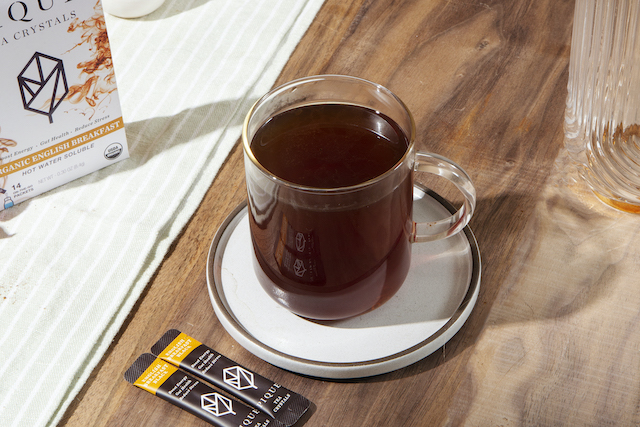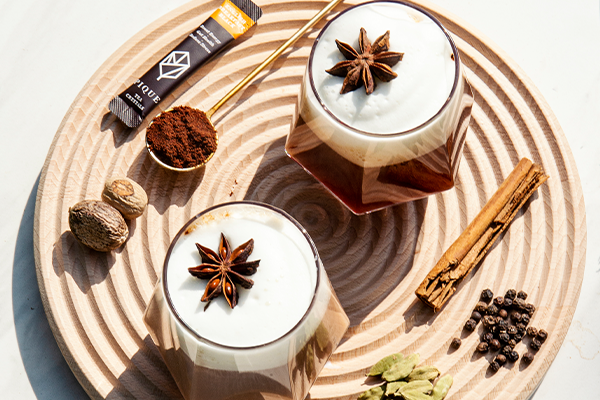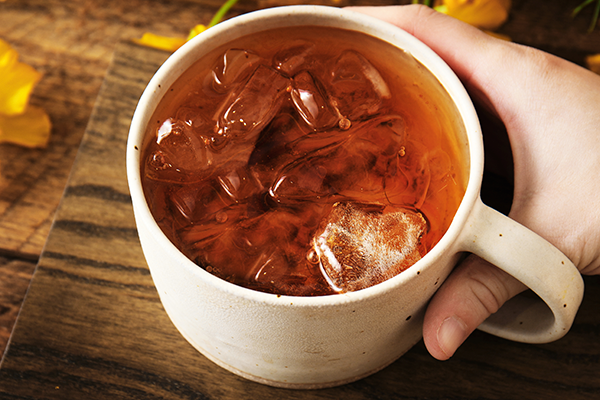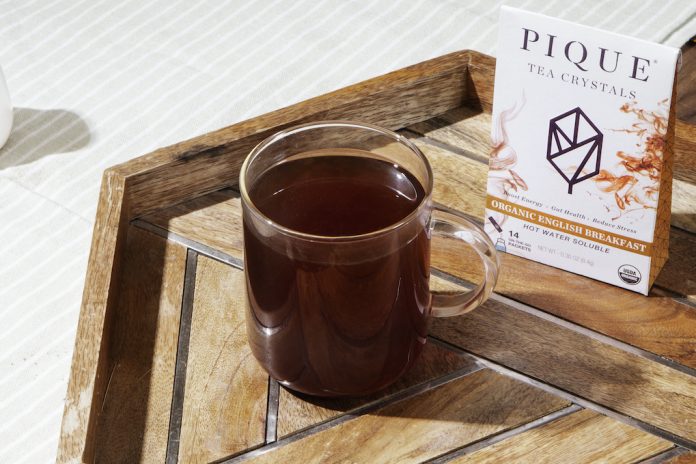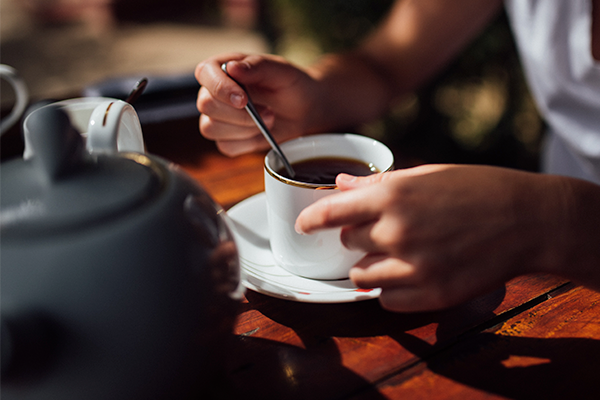English breakfast tea. The name doesn’t leave much mystery, does it? Indeed, it’s a type of black tea designed to complement a full English breakfast.
This classic style of tea is popular with tea lovers worldwide. Whether you prefer an invigorating “morning cuppa” or an indulgent Southern-style sweet iced tea, you’ve probably enjoyed English breakfast tea.
But how much do you really know about it?
We’re spilling all the tea here… including the best English breakfast teas, their history, how breakfast black tea is made, health benefits, and how to brew a perfect cup of tea at home.
The History of English Breakfast Tea
England has enjoyed black teas like English breakfast tea for over 360 years.
Surprisingly, coffee came to England before tea. And when Portuguese and Dutch traders began bringing Chinese tea to England in the 17th century, coffee houses were the first to carry it there.
As time went on, black tea went from being an upper-class indulgence to a widespread favorite among British people.
By the time the British East India Company monopolized the 18th-century tea trade, blended black tea was ubiquitous. No doubt plenty of British people were drinking it at breakfast.
However, the first recorded mention of “English breakfast tea” didn’t occur until 1843, and it was actually in the United States. (1)(2)
And the first mention of “breakfast tea” in what is now the U.K. wasn’t until 1880 in Scotland. Then in 1892, Queen Victoria tried breakfast tea from Balmoral Castle in Aberdeenshire, Scotland and decided to bring a supply home to London.
That’s when the term “English breakfast tea” became widespread, and it’s stuck ever since. (Even though English people also serve it during afternoon tea time.)
However, along with modern English breakfast tea, there are also Scottish breakfast tea and Irish breakfast tea, not to mention variations from blend to blend.
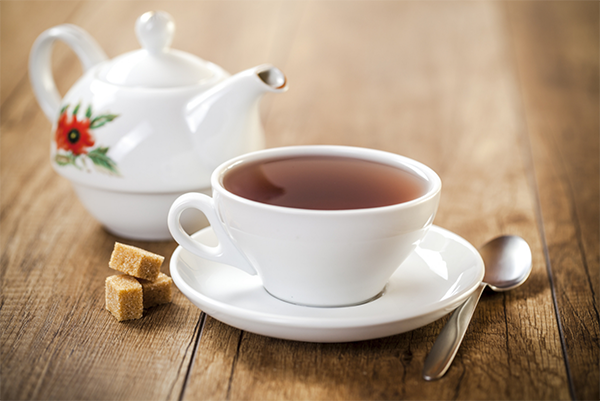
How English Breakfast Tea is Made
Like white tea and green tea, English breakfast tea blends are “true teas” from the leaves of Camellia sinensis.
In other words, blended black tea is not an herbal tea or tisane. It’s only made as a leaf tea, or from tea tips (tender shoots).
The main difference between black tea and other true teas is that black tea is oxidized longer. Oxidation takes place after harvest, as the tea ages.
This extended aging process transforms the flavor profile, aroma, appearance, and health properties of black tea.
However, not all black teas or even all English breakfast teas are created equal.
On the one hand, there are single estate teas, organic loose teas, and high quality blended teas. Then there are mass-produced, mechanically harvested teas that may be chemically aged, and are usually packaged in tea bags or sachets. (Eww!)
But no matter the quality, English breakfast tea manufacturers blend their teas for consistent taste and other properties.
The most popular blends today include Indian, Sri Lankan, and Kenyan teas. But high-end tea makers often use a blend of Chinese, Indian, and Sri Lankan teas.
Irish breakfast tea is similar to popular English breakfast tea blends, but with more Assam tea, resulting in a malty flavor and reddish tea.
Of all U.K. breakfast teas, Scottish breakfast tea tends to be the heartiest. It may have even more Assam than Irish breakfast tea, or may include tea from Indonesia.
Keep in mind, though, that there are no regulations defining “English breakfast tea,” or even standard formulas. In fact, many tea makers keep their blends as secret as they can.
That’s why the best way to find your favorite version is to explore the various black teas that are used in English breakfast tea.
You might discover you enjoy a single estate tea more than a blend, or you might invent your own breakfast blend!
Flavor Profile
Generally speaking, English breakfast tea is stronger, richer, and more robust than green tea, with fewer vegetal notes and a smoother finish.
As a rule, these blends are usually very bold. That’s because tea drinkers expect them to stand up to a hearty English breakfast, and quite often milk and sugar, as well.
Pro-tip: adding dairy to tea may reduce the effect of natural antioxidants, so be aware if you want the full health benefits of tea. (3)
Or, if you prefer the creamy consistency of milky tea, try a nut or plant milk instead.
The 5 Best English Breakfast Teas
- Keemun Tea from China
- Assam Tea from India
- Ceylon Tea from Sri Lanka
- Darjeeling Tea from India
- Earl Grey Tea
1. Keemun Tea from China
If you plan to explore English breakfast tea, why not start at the beginning?
Most tea experts agree that Keemun tea from China was probably the original English breakfast tea – the tea English people drank at breakfast before the phrase even existed.
While the Opium War put a damper on widespread consumption of Keemun and resulted in substitution with other teas, you can still find it in premium blends today.
Grown exclusively in the Anhui province of China, Keemun is dark and smooth, yet bold. Look for rich notes of malt and dark chocolate with undertones of smoky flavor.
High-quality single estate Keemun teas may be aged longer than other black teas, resulting in hints of tobacco, pine, or fruit.
2. Assam Tea from India
If you want to experience the range of English breakfast tea, don’t neglect to sample Assam tea.
This particular tea is the major tea in most popular English breakfast tea blends, but not without reason.
Assam, India’s most productive tea region, produces a robust, smooth, malty tea.
The warm tropical climate, low altitude, and abundant rainfall from storms lend bright flavors, a bright color, and a strong chocolate aftertaste to Assam black tea.

3. Ceylon Tea from Sri Lanka
Sri Lanka changed its name from Ceylon in 1972, after it stopped being a British colony. However, most people still call teas from Sri Lanka “Ceylon teas,” including people from Sri Lanka.
Ceylon teas are an important part of most English breakfast blends.
This south Asian country has tea gardens in mountainous regions as well as lower altitude terroirs. For the most part, Ceylon tea has low levels of astringency, but otherwise, the flavor profile varies significantly.
Low-lying regions produce Ceylon leaves with a strong, spicy flavor and burgundy-brown colored tea.
On the other hand, tea from higher regions is malty with notes of caramel and has a rich, nearly-black hue when brewed.
Ceylon teas are a fantastic choice for making your own iced tea, too.
4. Darjeeling Tea from India
Darjeeling tea, from a mountainous region of India with the same name, is sometimes called the “champagne” of tea.
Not surprisingly if you’ve tried champagne before, Darjeeling tea has delicate, fruity, and floral notes.
While most commercial English breakfast tea blends don’t include Darjeeling, you can blend it with Ceylon for a balanced, delightfully nuanced black breakfast tea.
If you decide to enjoy a cup or two of Darjeeling at breakfast, try pairing it with a fruity or sweet-tasting meal.
5. Earl Grey Tea
Strictly speaking, Earl Grey isn’t “English breakfast tea.”
However, this citrusy English tea with added bergamot notes is very popular at breakfast in the U.K.
Among premium Earl Grey manufacturers, robust Assam tea is a common choice for the base. The bright, delicate, floral bergamot oil balances perfectly with the assertive and malty Assamese leaves.
Just make sure you buy organic, high-quality Earl Grey leaves. Low-end manufacturers often use artificial bergamot flavoring rather than proper oil from bergamot orange rinds.
Health Benefits of English Breakfast Tea
Although it doesn’t get as much press as green tea, plenty of peer-reviewed research has demonstrated health benefits to drinking black tea.
Most of these benefits occur thanks to the natural antioxidants in black tea. Remember the oxidation we mentioned above?
During oxidation, the catechins (a type of polyphenol) predominantly found in green teas actually transform into theaflavins and thearubigins (other types of polyphenols).
Theaflavins and thearubigins are essentially unique to black teas, and they carry their own set of health benefits. (3)
These special antioxidants are larger in size and therefore hang out in your gut for longer and are absorbed lower down than the catechins in green and white tea. (4)
Black tea theaflavins even have a prebiotic effect, meaning they help to feed beneficial microbes in your gut. (5)(6)
Because of these attributes, they’re excellent for supporting gut health and a healthy colony of bacteria. (6)
And generally speaking, antioxidants support overall health and cellular health. (4) The antioxidants in green tea and black tea are of similar potency, and research suggests they may both (7):
- Support heart health (8)
- Support healthy blood pressure levels (9)
- Support healthy weight maintenance (10)
- Support healthy metabolism of sugar and fats (8)(11)
But perhaps best of all, compared to most antioxidant supplements, the antioxidants in tea and other foods may absorb more easily with fewer adverse effects. (12)
How to Brew English Breakfast Tea at Home
Here’s the easiest way to brew your own English breakfast tea:
- Use 2-3 grams of high-quality tea leaves for every 6 ounces (180 ml)
- Bring water to a boil
- Before it cools below 200 degrees Fahrenheit (93.3 degrees Celsius), add water to your tea leaves (using a teapot, loose leaf tea strainer, or infusers)
- Steep 3-5 minutes, then separate liquid and leaves
You can also experiment with more tea or a longer steeping time if you want stronger tea.
Many English people add milk, cream, honey, or sugar to their black tea.
While these ingredients are perfectly fine for the occasional treat, drinking black tea straight is a better choice most of the time.
Sweeteners aren’t great for your energy or dental health, and milk may inhibit the antioxidant effects of tea. (13)
But if you want, you can add some unsweetened nut or plant milk and a healthy zero-calorie sweetener like organic stevia instead.
Want to make your own iced tea at home with English breakfast tea? Learn how to brew the perfect iced tea.
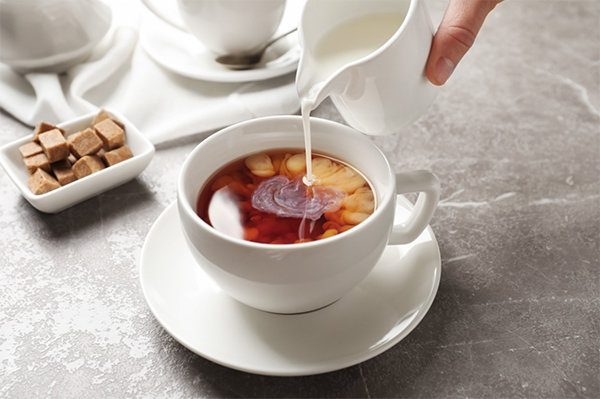
Final Thoughts
Black teas like English breakfast tea are the perfect zero-calorie energy booster.
They have more caffeine than green or white teas, and different antioxidants not found in most teas.
So if you want to get all the benefits of tea, try drinking English breakfast tea in the morning, then follow it up with a lower-caffeine, catechin-rich green tea later in the day.
Did this article inspire you to explore English breakfast teas? Which is your favorite? Let us know in the comments!
